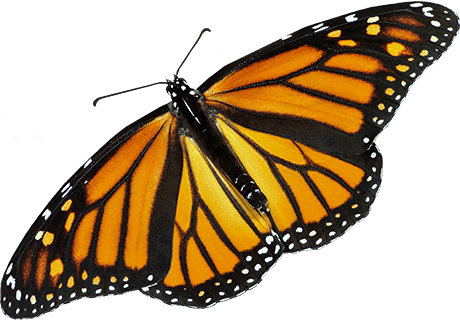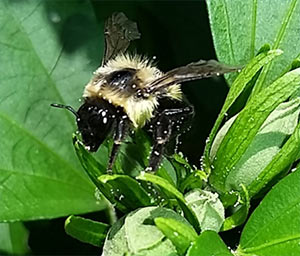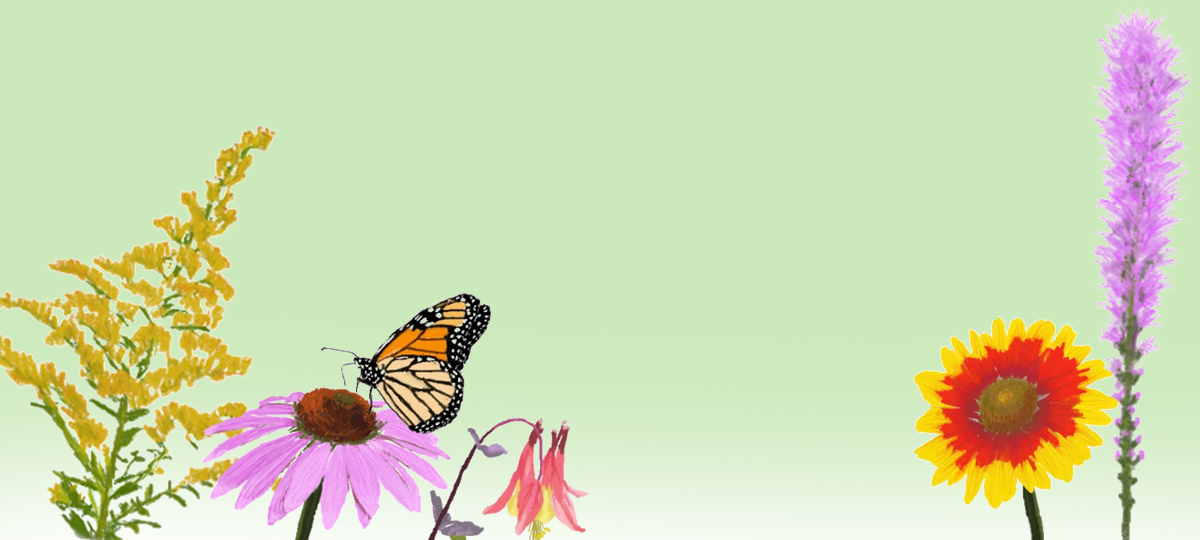
Protecting
Pollinators
“Not a single bee has ever sent you an invoice. And that is part of the problem – because most of what comes to us from nature is free, because it is not invoiced, because it is not priced, because it is not traded in markets, we tend to ignore it.”
- Pavan Sukhdev, United Nations report, The Economics of Ecosystems and Biodiversity
What is Pollination?
Pollination occurs when the pollen grains from a flower’s anther comes in contact with the sticky stigma in its center. This process can occur on the same flower (self-pollination) or between two different flowers of the same species (cross-pollination). Cross-pollination allows for more variety within the next generation, better adaptations to changing environments, and better protection against diseases.
What are Pollinators?

Some bees have a structure on their hind legs called a pollen basket, or “corbicula”. These areas have long stiff hairs to collect and transport pollen.
Bees and butterflies are probably the best-known pollinators, but they aren’t the only ones; moths, beetles, hummingbirds and more also help with this process, though each may have a preference for certain types of flowers.
Cross-pollination is an extremely important process both in nature and in agriculture for the healthy proliferation of plants and crops all over the world. Did you know that pollinators are responsible for a third of our food supply?

Why Are Pollinators at Risk?

- Nutrient and habitat loss due to development
- Pests and diseases
- Pesticide exposure
- Climate change
These combined environmental challenges have caused many pollinator groups to suffer severe losses in the last few decades, and in turn, has initiated concern about the future balance of our ecosystems and pollinator-dependent agriculture.
Common Bee Myths
-
All bees live in hives – MYTH!
There are 4,000 bee species in North America, however the vast majority of them do not live in hives. Most bees are actually solitary, and live alone, only socializing to find a mate. Instead of living in a hive with thousands of other bees, solitary bees make their nests in the ground or in trees. Solitary bees make up the majority of our pollinators, so be sure to provide them with food and nesting areas! -
All bees make honey – MYTH!
Honey bees are the only types of bees that make the honey we eat. Other bees like bumble bees can create honey, but it is a lot harder to harvest. Honey is made by mixing flower nectar with enzymes in the honey bee’s mouth. The bees fan their wings to help reduce water, then cap the honeycomb with a layer of wax. -
Colony Collapse Disorder is killing all the bees – MYTH!
Colony Collapse Disorder (CCD) occurs when the worker bees of a honey bee colony disappear. Although this affects the agricultural supply of honey, it is not the reason for the disappearance of bumble bees. Most bees are in decline because of:
- Lack of food (wildflowers)
- High pesticide use
- Pathogens











